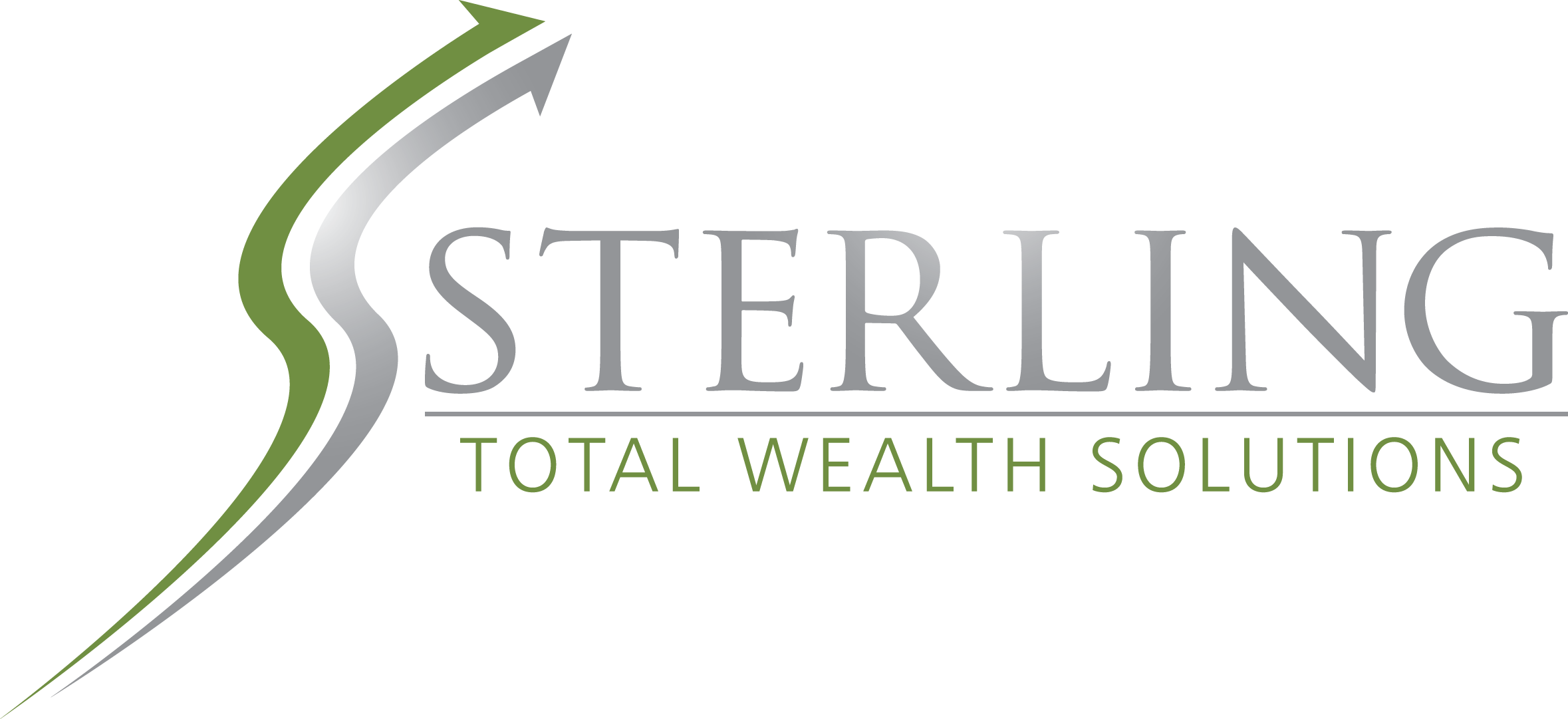In this month’s recap: Stock prices powered higher and energized investors thanks to a month-long succession of positive news events.
Monthly Economic Update
Monthly Economic Update | Presented by Sterling Total Wealth Solutions | December 2020
U.S. Markets
Stock prices powered higher and emboldened investors in November thanks to a series of positive news events.
The Dow Jones Industrial Average, which has lagged much of the year, led the rally, jumping 11.84 percent. The Standard & Poor’s 500 Index tacked on 10.75 percent while the Nasdaq Composite rose 11.80 percent.1
All Eyes on the Election
Stocks opened the month strong, climbing throughout election week as bargain-hunting investors appeared to swoop in following a weak September and October.
While the immediate outcome of the presidential election was undecided, the projected results suggested a divided Congress, which investors interpreted as a productive environment for businesses.
Vaccine Booster
Stocks climbed higher on news of positive stage-three COVID-19 trial results that suggested a highly effective vaccine may be near at hand. Stocks that had been hurt by economic lockdowns surged on the news, while the stay-at-home stocks suffered steep declines. Bond yields and oil prices both moved higher on expectations of increased economic activity.
Positive momentum carried the Dow Jones Industrial Average, the S&P 500 index, and the Russell 2000 to record-high levels, with the Dow closing above the 30,000 mark.2
Companies Report Solid Quarter
While the U.S. election and progress on a coronavirus vaccine dominated the news cycle, companies in the S&P 500 reported solid earnings in the third quarter. As expected, the S&P 500 reported a year-over-year earnings of -6.3 percent. But when three hard-hit industries—energy, airlines, and hospitality—were excluded, earnings for S&P 500 companies grew by 4.3 percent.3
Sector Scorecard
All industry sectors moved higher in November, except Utilities, which fell 1.42 percent. The month saw strong gains in Communication Services (+7.34 percent), Consumer Discretionary (+5.49 percent), Consumer Staples (+3.95 percent), Energy (+34.54 percent), Financials (+17.50 percent), Health Care (+3.35 percent), Industrials (+14.74 percent), Materials (+12.50 percent), Real Estate (+5.96 percent), and Technology (+5.33 percent).4
What Investors May Be Talking About in December
After such a powerful rally, investors may be asking themselves, “What’s next for stock prices?”
Traders are expected to watch the trajectory of new COVID-19 infections and how they may influence economic activity over the coming weeks and months.
While investors recognize that there will be manufacturing and distribution challenges with approved vaccines, they may also be paying attention to when a vaccine may be available to the general public.
World Markets
Riding a global wave of optimism surrounding multiple COVID-19 vaccine trials, the MSCI-EAFE Index jumped 16.86 percent in November.5
European markets were broadly higher, with sharp gains in France, Germany, Italy, and the United Kingdom. European markets appeared to look beyond the new lockdowns and obstacles that prevented the passage of a European Union recovery package.6
Markets in the Pacific Rim also had a solid month. Australia picked up 9.96 percent while Japan tacked on 15.04 percent.7
Indicators
Gross Domestic Product: The second reading of GDP growth was unchanged from its initial estimate of up 33.1 percent on an annualized basis.8
Employment: The number of new jobs increased by 638,000 in October, which sent the unemployment rate lower by one percentage point to 6.9 percent.9
Retail Sales: Retail sales rose 0.3 percent, making November the sixth-straight month of increased consumer spending.10
Industrial Production: Industrial output jumped 1.1 percent, although production remains below its pre-pandemic February level.11
Housing: Housing starts increased by 4.9 percent, led by a 6.4 percent rise in single-family home starts.12
Existing home sales rose 4.3 percent in October, touching a 14-year high. Median prices also hit a new record high.13
New home sales dipped 0.3 percent, as declines in the West and South regions weighed on overall results.14
Consumer Price Index: The prices of consumer goods remained unchanged. However, in the last 12 months, prices have increased by 1.2 percent.15
Durable Goods Orders: Orders of long-lasting goods rose by 1.3 percent, which was above consensus estimates. The gain was driven by defense-related purchases.16
TIP OF THE MONTH

Some small business owners don’t have succession plans. If you haven’t created one, now is as good a time as any to start. This may not only enable continuity, but also address some legacy-strategy issues.
The Fed
On November 25, the Federal Open Market Committee released the minutes from its November meeting. The minutes showed that the Fed discussed plans to offer more definitive guidance about its purchases of Treasuries and mortgage-backed securities by linking the purchase program to economic conditions.17
This new guidance may be introduced as early as their next meeting on December 15. The minutes also reflected the Committee’s concern about the lack of a new fiscal stimulus. However, the Fed also acknowledged a better-than-expected economic improvement in American households.17
|
MARKET INDEX |
Y-T-D CHANGE |
November 2020 |
|
DJIA |
3.86% |
11.85% |
|
NASDAQ |
35.96% |
11.80% |
|
S&P 500 |
12.10% |
10.75% |
|
|
||
|
BOND YIELD |
Y-T-D |
November 2020 |
|
10 YR TREASURY |
-1.08% |
0.84% |
Sources: Yahoo Finance, November 30, 2020
The market indexes discussed are unmanaged and generally considered representative of their respective markets. Individuals cannot directly invest in unmanaged indexes. Past performance does not guarantee future results. U.S. Treasury Notes are guaranteed by the federal government as to the timely payment of principal and interest. However, if you sell a Treasury Note prior to maturity, it may be worth more or less than the original price paid.
QUOTE OF THE MONTH

“Remember that failure is an event, not a person.”
Zig Ziglar
THE MONTHLY RIDDLE

Daryl weighs 120 pounds more than his sister Julianne. Their combined weight is 180 pounds. How many pounds does Daryl weigh?
LAST MONTH’S RIDDLE: What is the significance of the following: The year is 1978, thirty-four minutes past noon on May 6th.
ANSWER: The time and month/date/year are 12:34, 5/6/78.
Securities offered through Registered Representatives of Cambridge Investment Research, Inc., a Broker/Dealer, Member FINRA/SIPC. Advisory services offered through Cambridge Investment Research Advisors, Inc., a Registered Investment Advisor. Sterling Total Wealth Solutions and Cambridge are not affiliated.
To learn more about Sterling Total Wealth Solutions, visit us on the web at www.sterlingtotalwealthsolutions.com
Know someone who could use information like this? Please feel free send us their contact information via phone or email. (Don’t worry – we’ll request their permission before adding them to our mailing list.)
CITATIONS:
- The Wall Street Journal, November 30, 2020
- CNBC.com, November 23, 2020
- FactSet Research, November 20, 2020
- FactSet Research, November 30, 2020
- MSCI.com, November 30, 2020
- MSCI.com, November 30, 2020
- MSCI.com, November 30, 2020
- CNBC.com, November 25, 2020
- The Wall Street Journal, November 6, 2020
- The Wall Street Journal, November 17, 2020
- The Wall Street Journal, November 17, 2020
- MarketWatch.com, November 18, 2020
- The Wall Street Journal, November 19, 2020
- Reuters.com, November 25, 2020
- The Wall Street Journal, November 12, 2020
- MarketWatch.com, November 25, 2020
- The Wall Street Journal, November 25, 2020
